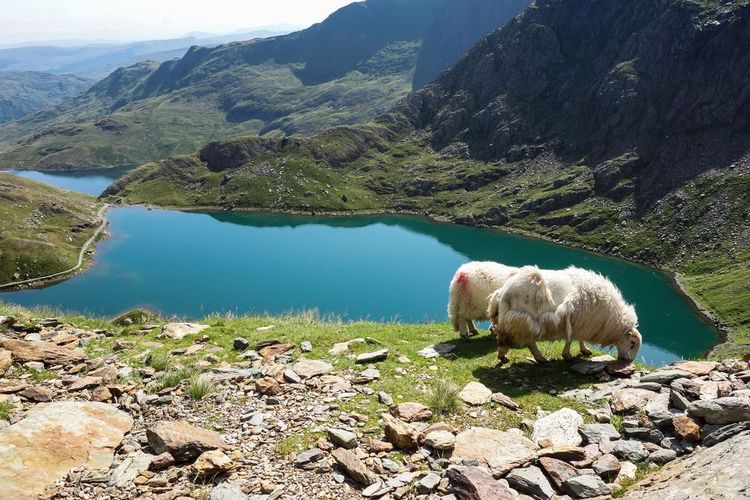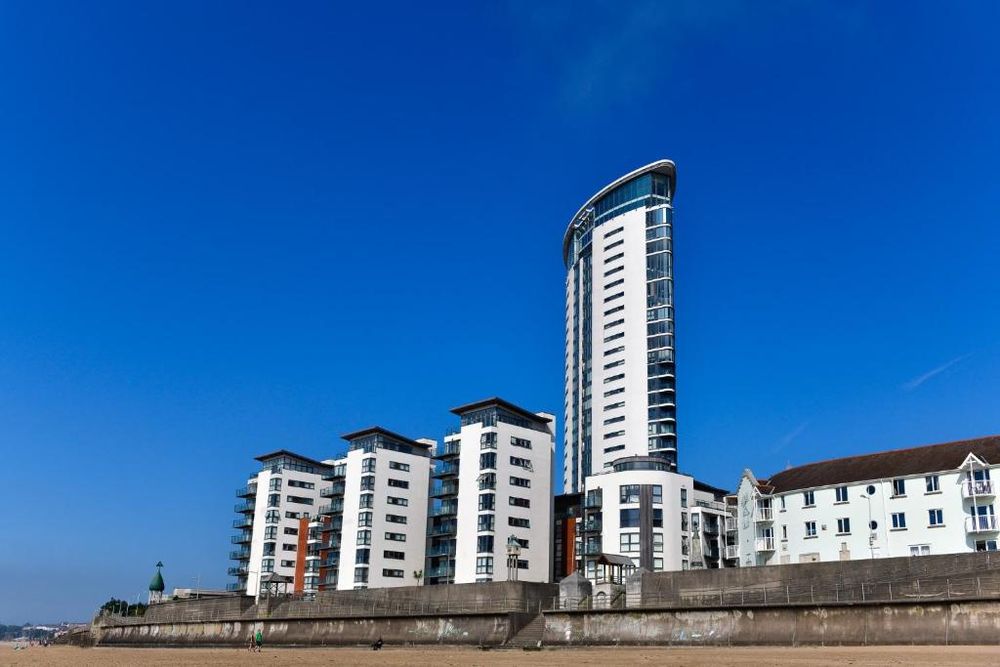 Wales
Wales
Wales’ second city, Swansea is a quiet cultural powerhouse tucked along the showstopping Gower Peninsula, a mosaic of monumental limestone cliffs, world-beating beaches, and fecund woodland so enchant that the area became the UK’s first to be designated an Area of Outstanding Natural Beauty. Settled since 22,000BC, ancient burial sites found along the coast show the earliest known signs of modern human life in Great Britain, while the rest of the Gower is littered with the remains of 13th-century castles from the Norman conquests and Swansea is resplendent with industrial heritage dating to its 18th-century heydays when it was known as “Copperopolis” because of its importance as a metal smelting and trading hub. Now a city famous for its labyrinthine indoor market (which is the largest in the country!), arterial green spaces, and hometown deity Dylan Thomas, a son of the city revered as one of the greatest poets to have ever lived, it is a vibrant-yet-humble seaside town perfect for a weekend trip or as a launchpad for an exploration of the surrounding Gower Peninsula and its many gems, among them a beach ranked as the best in Britain and one of the ten best in the world. A visit to Swansea is not one to be missed!
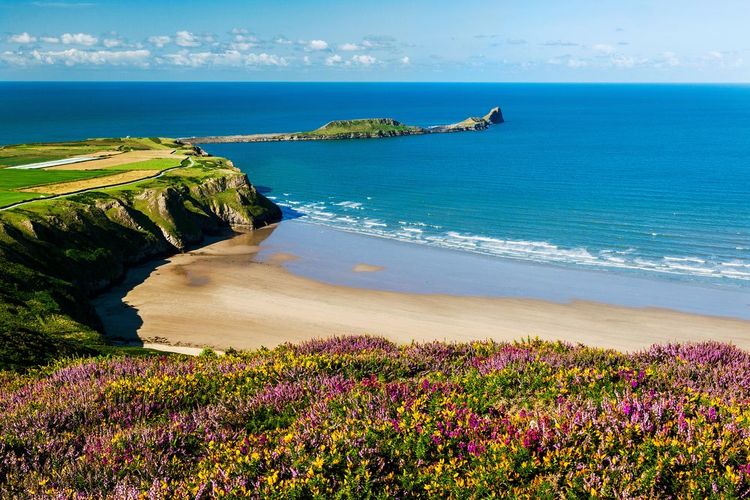
Rhossili Bay on the Gower Peninsula, Wales.
- © Billy Stock / ShutterstockSwansea, Wales’ Verdant Cultural Capital

Dylan Thomas Square, Swansea.
- © Billy Stock / Shutterstock“In my craft or sullen art Exercised in the still night When only the moon rages And the lovers lie abed With all their grief in their arms I labour by singing light”. -Extract from In my craft or sullen art, Dylan Thomas, 1939.
Born in an unassuming family home at 5 Cwmdonkin Drive, Swansea on 27 October 1914, Dylan Thomas is Swansea’s most famous son (describing himself as the “Rimbaud of Cwmdonkin Drive”) whose rhythmic, genre-bending poetry quietly (re)defined English literature’s twentieth century. Living in the city until the age of 23, he is a man whose words and mythology were just as much shaped by the sea tempests and limestone dreamscapes of the Gower Peninsula that swaddled him in his youth as they were by the rough-and-tumble fossils of fallen industry that beleaguered the contemporary city and the dereliction that dripped into the town’s dreary pubs which the enfant terrible __was notorious for haunting. When all this was destroyed during a three-night-long blitz on the city during the Second World War, Thomas would mourn “Our Swansea is dead”.
Traces of the troubled poet are now to be found around the city, whose legend almost single-handedly gave his hometown its contemporary cultural star. The Dylan Thomas Centre is the most obvious tribute to the artist, a Grade-II* listed neo-classical guildhall that hosts a year-round programme of literary events, including the annual Dylan Thomas Festival which runs for fourteen days between his birthdate (27 October) and death-date (9 November). Since October 2014 it has also been home to the “Love of Words” permanent exhibition, which explores Thomas’ life and work through a wealth of different media, from letters to books to worksheets to photographs.
5 Cwmdonkin Drive, Thomas’ aforementioned birthplace, is now a public memorial to the poet, a living museum which retains the spirit of the Edwardian era in every room and offers both personalised private tours and overnight B\&B stays. Cwndonkin Park, where Thomas played as a child, features a memorial stone inscribed with his seminal words from Fern Hill that overlooks the roaring Atlantic Coast whose rage recurs through Thomas’ corpus - “I sang in my chains like the sea,” proclaims the monument, echoing the poet’s iconic line. Dylan Thomas Square, meanwhile, features a statue of the artist watching over the marina and the Dylan Thomas Theatre, where Thomas used to perform back when it was known as Swansea Little Theatre. And, last but not least, head to the Uplands Tavern if you fancy a drink, a traditional Welsh pub that became Thomas’ favourite watering hole while he still lived in the city.
A Seaside City of Greens

Autumn leaves in Singleton Park, Swansea.
- © Leighton Collins / ShutterstockOne of Swansea’s defining features is the lunglike network of green spaces sheltered within its industrial ribs. Despite the sometimes lobotomised sheen of the modern developments that define much of the city’s contemporary, post-redevelopment architecture, then, Swansea manages to retain a noteworthy singularity in its commitment to honouring the verdant landscapes it finds itself in. Singleton Park is Swansea’s largest park, comprising 250 acres of land. Originally part of the aristocratic Vivian family estate until it was bought by the county council in 1919, it is a treasure trove of miniature biomes - from its rock gardens to its wildflowers meadows to its herb gardens - for the wandering traveller to discover and explore. Alternatively, let yourself be transported to another world in the Old Glasshouses which contain climatised collections of tropical jungle and arid desert plants. There is also a lake in the south-western corner of the park on which guests can rent and ride pedalos. It is flanked by a miniature golf course.

A gazebo folly in Clyne Gardens, Swansea.
- © Leighton Collins / ShutterstockClyne Gardens is another Vivian-family addition to the city, landscaped and managed in the mid-twentieth-century by Admiral Algernon Walker-Heneage-Vivian, a fanatical botanist who used his immense wealth to sponsor plant collecting expeditions overseas. The result was a kaleidoscope of exotic colours that still exists today, the gardens’ contemporary collection consisting of 2,000 plant species which includes some 800 varieties of rhododendron, the Admiral’s favourite flower. Among its other whimsical follies are a Japanese bamboo garden, a fairytale Bluebell Forest that explode in lilac come the turn of spring, and a castle the Admiral had built so he could watch ships coming into Swansea to harbour. Its bog gardens are also notable as some of the most extensive in the world, home to various species of giant plant that seem like lost relics of the Palaeolithic era, such as Elephant Rhubarb and Gunnera Manicata.
Other Amazing Things to Do in Swansea
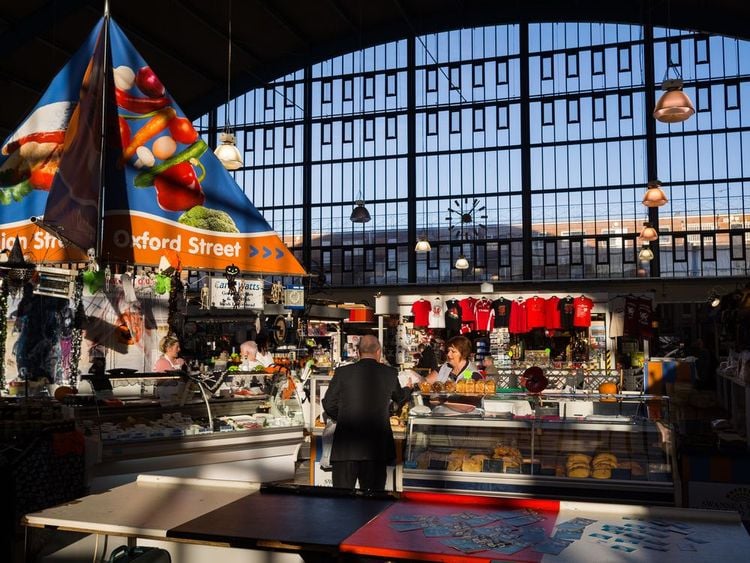
Swansea Indoor Market.
- © Greenybot / ShutterstockSwansea Indoor Market is the largest indoor market in Wales and is home to some 100 independent stalls and sellers offering everything from fish and fresh produce to jewellery and artisan knick-knacks. Swansea Market has existed in some form since at least the 17th century, although the city’s reputation as a market town goes back well into the 11th century. The current glass-roof trading hall was built in 1897. If you’re looking for a bite to eat during your stay this is undoubtedly the place to go, and although the market offers everything from fiery Thai to crispy Middle-Eastern falafel to fresh and authentic Japanese sushi, you would be a fool not to try the best of the local produce on display here: a strong Welsh cheese, some Gower salt marsh lamb (which has been a protected heritage food since 2021), or laverbread, a “Welshman’s caviar” made of locally-sourced laver seaweed.

Traditional Welsh laverbread.
- © CKP1001 / ShutterstockSwansea Museum is the oldest museum in Wales, dating back to 1841. Its rich collections recount the history of the city from its prehistoric origins to its medieval era to its industrial growth and include everything from an ancient mummy’s tomb to ‘The Tramshed’, which displays various memorabilia from the city’s now-defunct street cars. The National Waterfront Museum, meanwhile, offers a deep dive into the fascinating maritime and industrial history of Wales in an enriching and innovative interactive format. And the Glynn Vivian Art Gallery is the visual-arts hub of the city, founded in 1911 as the deathwish of Richard Glynn Vivian. Its focus is on modern and contemporary Welsh art, housing works by Ceri Richards, Gwen John, Augustus John, and Kyffin Williams.
Practical Information
- Swansea is easily reached from the rest of the UK by rail or car. Swansea’s main train station is well serviced by trains from several major UK cities including London, Cardiff, and Manchester. For those driving, the M4 gives easy access to the city, which also has two park-and-ride sites.
- The nearest international airport is Cardiff Airport. The most convenient way to get from the airport to Swansea is a taxi, which takes around 55 minutes and will cost around £120. There is also a non-direct bus which costs £9.40 that takes around 2 hours and 40 minutes, or a non-direct train that costs £10.30 and takes 1 hour and 40 minutes. Go here for more information..?utm_source=easyvoyage)
Our favourite hotel in Swansea
 Wales
Wales
Gower Peninsula, One of the Most Beautiful in the World
The Mumbles, the Quaint Seaside Gateway to the Gower

Mumbles Pier and Lifeboat Station seen from the air.
- © Red Media / ShutterstockA bustling Victorian fishing village complete with a postcard-perfect pier and lighthouse, this leg of coast, reachable from Swansea by a vintage-style land train that merrily chugs along the scenic coast, is famous as a shopper’s haven, some 120 stores and restaurants saturating the vibrant beachfront. The strip is perhaps most famous for its ice creams, with locals pledging their allegiance to one of two establishments: Joe’s, a historic parlour that has been selling luxury Italian-style gelato here since 1984 who and serve a world-class vanilla scoop, or Verdi’s, a 400-seater cafe-cum-gelateria with over thirty flavours on offer, from the Toffee Chip Crunch to the Kiwi Sundae. Truth be told both are brilliant, but if you want a real taste of Swansea (and something more on the savoury side) we cannot recommend enough Gower Seafood Hut. Opened in 2017 by fish-frying power couple Chris Price and Sarah “Kifty” Kift, Price has a childhood straight out of a blockbuster film, having been born on a fishing boat and only setting foot on dry land for the first time at the age of 17. Surely there’s nobody better qualified to curate the best catch that Swansea Bay has to offer for your eating pleasure then, so head over and indulge in some of the chef’s specialties, from mouthwateringly crispy fried whitebait to freshly-dressed Gower crabs.
Practical Information
- Mumbles is easily reached from Swansea via public transport, with regular buses running from Swansea Station seven days a week. Alternatively, a taxi from central Swansea to Mumbles takes approximately ten minutes and costs between £15 and £20. The land train runs in the summer months and costs £5.50 for a standard ticket. Or, there are several pay-and-display parking options in Mumbles for those with their own vehicles.
Rhossili Bay, One of the Best in the World
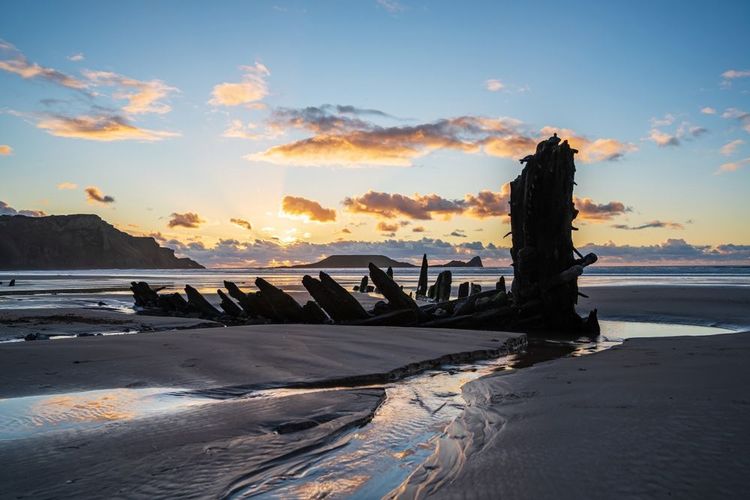
Rhossili Bay at sunset.
- © salarko / ShutterstockRhossili Beach is an almost household name in the UK, regularly ranked as one of the best beaches in the country; in fact, TripAdvisor famously once had it ranked as the best in the country and one of the ten best in the world. Elsewhere described as “the supermodel of British beaches” by The Independent, it is a beach of mythic melodrama, featuring three miles of sandy shore with a full view of the Atlantic, encompassed by jutting limestone cliffs dotted with cairns and a chapel, and housing the remains of a genuine shipwreck that has sat decaying on the coast since 1887. Worm’s Head, meanwhile, punctuates the far end of the strip, a monumental limestone headland whose most arresting feature, known as the “Devil’s Bridge”, connects together two of its constituent islands. It was once notably described by Dylan Thomas as “the very promontory of depression”, who was forced to spend a night stranded there after being trapped by the incoming tide. And, although visitors can still venture to the headland when the tide falls low, they are always advised to keep a close eye on the movements on the sea to avoid the same crepuscular fate.
During your visit to the beach, you will have plenty to do beyond just unwinding on the gorgeous sands. The bay is a perennial favourite of surfers and watersports lovers if you fancy a bit of adrenaline, or the clifftops hide some fascinating gems for those with adventurous hearts, including the Church of St. Mary, built in the 12th century and containing a memorial to Antarctic explorer Edgar Evans, and Arthur’s Stone, a 25-ton boulder capstone marking the site of a double-chambered Neolithic tomb which was one of the first in the country to be protected under the 1882 Ancient Monuments Act.
Practical Information
- The 118 bus runs from Swansea Bus Station to Rhossili roughly every two hours every day of the week except Sunday. The journey takes approximately one hour. Alternatively, there is a large car park located at Rhossili Bay. The beach is 400 metres from the car park. It is not wheelchair accessible.
- If you want to check out Worm’s Head, remember to check tide times and report to the Coastwatch Centre.
Three Cliffs Bay, the Rising Star

Three Cliffs Bay, Gower Peninsula, South Wales.
- © Billy Stock / ShutterstockRhossili Bay may be the household name along the Gower Peninsula, but Three Cliffs Bay is quickly becoming the new name on the block. More isolated and harder to get to than Rhossili, it is well worth the extra strain and seems almost a surrealist dreamworld, offering miles of golden sand and azure seas between the three monstrous (yet verdant) limestone cliffs from which it takes its name and a serpentine river that flows directly into the bay, all overlook by the ruins of a 12th-century castle (Pennard Castle) allegedly haunted by a winged witch known as the ‘Hag of the Mist’, the ghost of a homicidal maiden, and mischievous fairies. Legend has it anybody who tries to sleep between the castle walls won’t survive the night.
On the brighter side, though, Three Cliffs Bay is a truly stunning landscape that offers plenty to do: explore the castle ruins and the surrounding dunes and common land, populated by grazing cows and wild horses; climb the cliffs for breathtaking views over the sands and oceans; or just relax on the beach and go for a swim. The possibilities are endless!
Practical Information
- The best way to get to Three Cliffs Bay is by car. It is serviced by several car park options. The drive takes approximately thirty minutes from Swansea. Walking from the car parks to the beach will take between fifteen minutes to half an hour, depending on which you pick. The beach is not wheelchair accessible.
- If you’re travelling by bus, your best bets from Swansea Bus Station are taking line 14 to Post Office and then walking twenty-five minutes to the beach, or the 118 line to Shepherds then walking thirty-five minutes to the beach.
